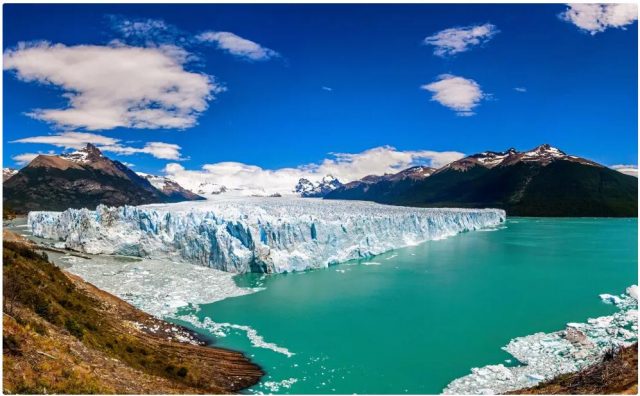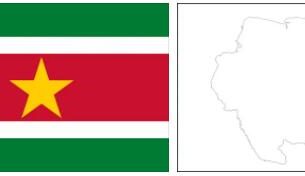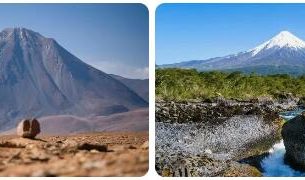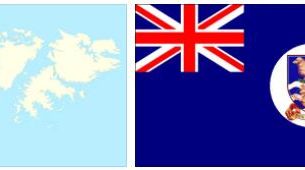Argentina is famous for its tango, the gauchos on the pampas and its absolutely wonderful nature with the numerous national parks. The seasons are mostly the opposite of those in the northern hemisphere. Here you will find detailed information about the best time to travel and the climate in Argentina.
When traveling to Argentina, you should plan your trip well. Because regardless of whether you want to experience Buenos Aires, whether you are drawn to the Perito Moreno Glacier or the famous Iguazu Falls, optimal planning is essential. Secluded Patagonia is a rough, pristine and beautiful part of Argentina. Chilean Torres del Paine National Park is similar, except that Patagonia will have far fewer visitors, so you can travel more relaxed. If that’s too quiet for you, you can stay overnight in one of the smaller, family-run and secluded wineries in Mendoza or Salta or do a wine tasting. And if all of that is still not enough, you should consider a detour to the Valdés Peninsula. There you can see whales, penguins and sea lions in their natural habitat.
Best travel time
The seasons in Argentina are mostly the opposite of those in the northern hemisphere. However, as one would expect from a country this size, different regions each have their own climatic zones. Buenos Aires is hot in summer (November to April) and mild in winter. Many Buenos Aires residents travel in summer, so this time of year can’t be the worst choice.
The Lake District is lovely in spring (October) and autumn (March) , but also a little cooler in these months than at the height of summer. This unpredictability is part of the charm of Patagonia, so be prepared for every season of the year.
In the extreme south of Patagonia , weather conditions can be very uncomfortable during the winter months, so a visit between June and August is not advisable . The arid north-western regions can be very hot in summer (December to February), while the Mendoza area has moderate temperatures all year round.
The best time to travel to Argentina therefore largely depends on where you plan to go.
Winter ( June-August ) is the best time to visit Iguazú and the northwest . The rain and heat then subsided. Spring (August-October) is pleasant in that the temperatures are mild and the crowds of tourists decrease significantly.
Optimal travel time after months
January February
The two months are the highlight of the Argentine summer and popular months for visiting Patagonia, whether in northern Bariloche or southern El Calafate. Accommodation is quickly booked out at this time of year. January can be quite wet in the northwest of the country and extremely hot in the northeast.
March
March is a nice month to travel to Argentina. Summer is drawing to a close nationwide, but Patagonia is still easy to travel to and trekking tours are easy to organize.
April
Autumn is a lovely time of year to visit the wine-growing regions of Patagonia and Mendoza. The crowds are decreasing and the changing colors of the deciduous trees provide great photo opportunities.
May
This month is a great time to visit Argentina’s wetlands, Esteros de Ibera. May and June are cooler months and are good opportunities for wildlife viewing.
June
The Argentine ski season usually starts in mid-June. The best snow can be found in the area around Bariloche. It is also nice to watch the southern right whales arriving on the Peninsula Valdes at the end of June.
July August
July and August are good places to visit Buenos Aires. In the evenings it is cooler and the mornings are fresh, so ideal conditions for exploring the capital. The ski season officially starts in July.
September
September and October are good months to visit the Valdés Peninsula. Nature lovers can then easily watch the numerous whales, seals, penguins and various sea birds.
October
Spring in the Lake District around Bariloche is a great time to marvel at the carpets of wildflowers. There are a variety of outdoor activities to choose from, although rainfall here can be slightly higher than the rest of the year.
November
November marks the end of spring and the beginning of summer. Visiting Argentina at this time generally means avoiding the crowds that December will increase. The area around Salta is often very dry, but in November it becomes greener and greener.
December
Summer in the middle of Argentina can be a busy time to visit, but it also offers the best chance for warm, clear weather in Patagonia. The rain that has fallen at the Iguazu Falls means the volume of water rushing over the falls is high and the landscape here is dramatic.
Climate in Buenos Aires
The maximum temperature in Argentina is 30 ° C in January. In June and July the thermometer rises to a maximum of 15 ° C. The summer (June to September) with average 16 ° C mild . In the winter months it is around 28 ° C very warm . During the day, the average annual temperature in Argentina is a pleasant 22.0 ° C.
At night it gets coldest with 6 ° C in June, July and August. The thermometer rarely falls below 18 ° C in January. While the nights in summer have averages of a mild 7 ° C, the thermometer drops to a warm 16 ° C at night between November and March. The temperature averages 11.4 ° C at night all year round.
The water temperature is up to 22 ° C in January and February, in July, August and September the sea has a maximum of 12 ° C. In the summer months from June to September the water is cold with an average of 13 ° C. Between November and March the values are at a pleasantly warm 20 ° C. Over the year, the sea has an average temperature of 16.8 ° C.
With 7 rainy days, October , November and December are the rainiest months of the year. The May and June are with 4 days of rain, the driest months of the year . From June to September Argentina is very dry with an average of around 5 rainy days each, the winter (November to March) is quite dry with 6 rainy days. An annual average of 5.6 days of rain falls per month.
Food and drink
Argentine food can be summed up in one simple word: beef. Beef is the cornerstone of Argentina’s economy and diet. It is mainly found in traditionally tasty barbecues or asados. Another delicacy in Argentina is Dulce de Leche, a very sweet and sticky porridge that is eaten on bread, in cakes or straight from the spoon. When it comes to drinks, mate is the national drink of the Argentines.
Money and currency
According to politicsezine, the currency in Argentina is the peso. In some places, US dollars are accepted as a form of payment, but only bills and not coins. Change is always scarce. ATMs are widespread, especially in the cities, and withdrawing money is not a problem. Most machines accept all credit cards as well as Cirrus and Plus cards. While Visa and debit cards are widely accepted everywhere, there can be some problems with a Mastercard.
Language
The official language is Spanish. English is widespread in the tourism industry and you can communicate well.




